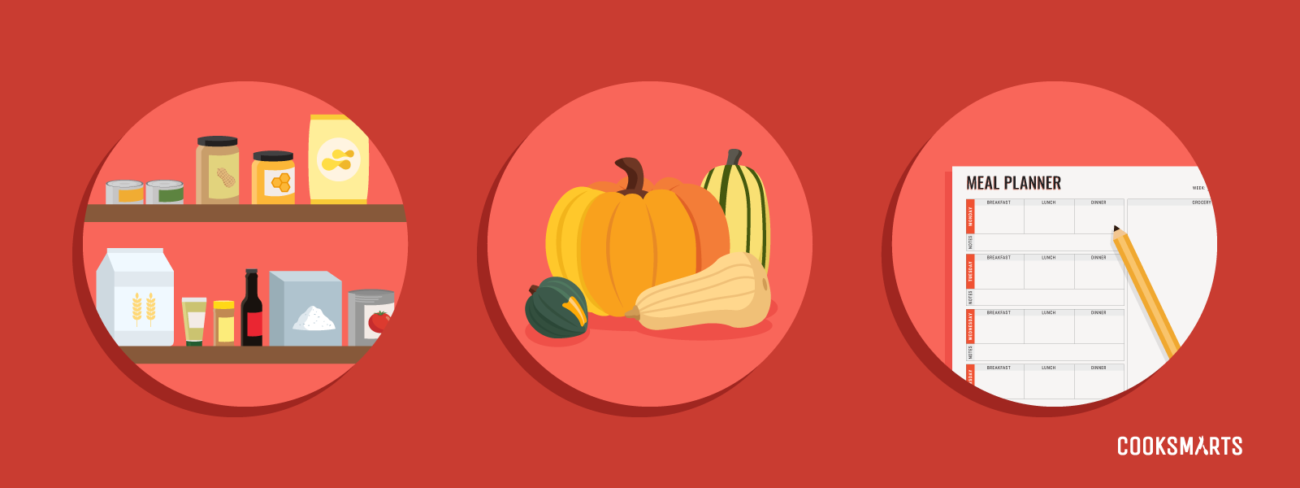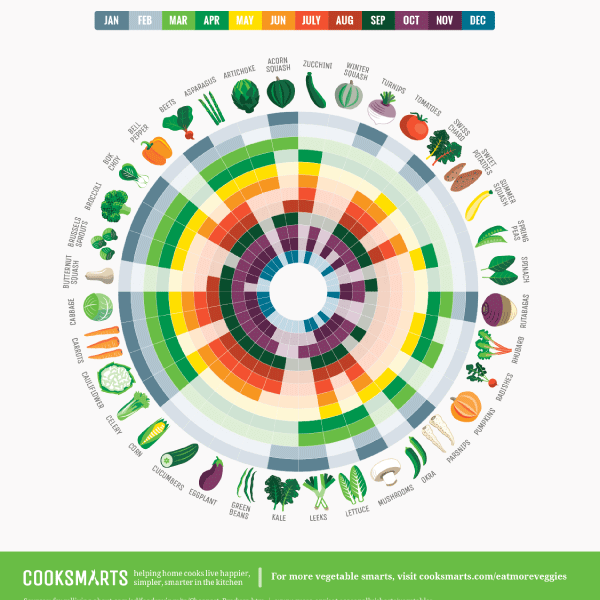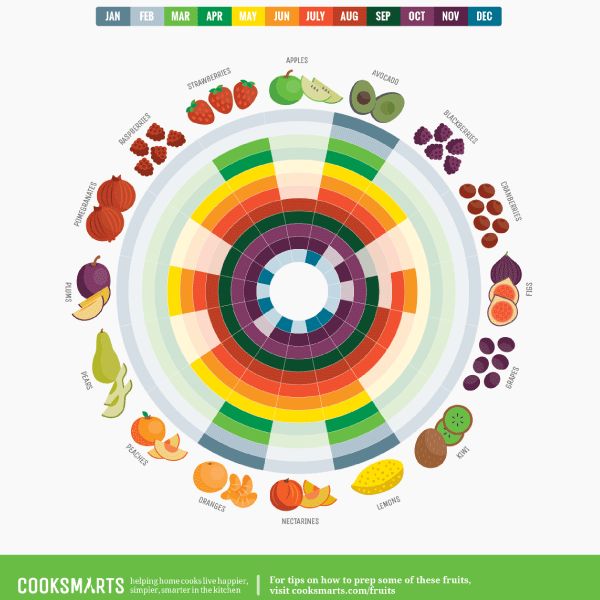It’s a common misconception that eating healthy meals is only for those who are able to pay a pretty penny for it. Not so! With a good plan, you can enjoy healthy meals on a budget.
10 Tips for Cooking on a Budget with Meal Planning
Meal planning really lays the groundwork for savings, and who doesn’t want to reduce monthly expenses? If you plan well, you’re likely to spend less when grocery shopping. In fact, when you go to the store without a list, you can spend up to 40% more! Plus, you’re more likely to actually cook when you have a plan in place, and we all know cooking at home saves money.
A plan can take on any form. At the most basic, it’s a simple grocery list, but you’ll save even more when there is a good meal plan behind that list. For those who want to improve their meal planning skills, here are our 10 tips for maximum meal plan savings:
1. ALWAYS PLAN TO COOK ONE MEAL YOU’VE MADE BEFORE
Don’t try to reinvent the wheel every time you cook! Every home cook needs a few back-pocket recipes that they can cook well and know will be gobbled up by the whole family, not pushed aside after a few bites. The more standbys you use, the less likely you’ll have to acquire new pantry ingredients, which can definitely add up. So, when you make your week’s dinner menu, include at least one meal you know like the back of your hand so you’ll be more motivated to cook (and not succumb to pricey take-out).
2. PLAN MEALS AROUND ITEMS IN YOUR PANTRY
Before making your plan, go through your pantry, fridge, and freezer, and make a “To-Use” list. Start by building your recipes around those items so you have less to buy at the grocery store. Ingredients can really add up, so you’ll save yourself a lot of money by using them up rather than throwing any away or buying repeats.
3. LET ONE RECIPE STRATEGICALLY INFORM THE NEXT
Good meal planning is like putting together a puzzle. Try to avoid selecting different recipes that don’t fit together, or else you’ll be buying a lot of different ingredients. Select one, look at the ingredient list and let that help you select recipe #2 and so on. For example, if recipe #1 uses half a head of cabbage, find another recipe that needs cabbage, so that it won’t be wasted. Or, say you were going to make rice for recipe #1, then try to find a recipe that used leftover rice for recipe #2, so that you can cook once and eat twice.
4. ALWAYS USE INGREDIENTS IN ORDER OF PERISHABILITY
We’ve all had to throw out veggies that have gone bad because we didn’t use them soon enough. The National Resource Defense Council actually found that the average American household throws away $2,200 in food every single year, which is bad for bank accounts and the environment alike.
So, if you’re looking for how to prevent food waste (and save those Benjamin Franklins!), simply think about perishability. Hearty ingredients like carrots, potatoes, or butternut squash can be saved for the end of the week whereas more delicate veggies like chard and tomatoes should be used up earlier to prevent spoiling. To help you sort out the shelf-life of most veggies, download our Produce Shelf Life & Storage Guide below:

Produce Shelf Life Guide
Reduce food waste when you learn how to care for fresh produce.
More Veggies Please!
Eat more veggies and live healthier with our Produce Shelf Life Guide.
I acknowledge by requesting this info, I'll be added to Cook Smarts' newsletter list. I can unsubscribe at any time.
5. MAKE LEFTOVERS A PART OF YOUR WEEKLY ROUTINE
Going out to lunch every day can be a bad habit for your health and your wallet. According to the Bureau of Labor Statistics, the average American household spends $3,000 per year dining out. That’s a lot of money. So, if you’re going to be cooking dinner anyway, you might as well double it and have some leftovers for lunch. Beyond that, make extra for your freezer so you always have a backup meal in stock.
6. PAY ATTENTION TO PEAK PRODUCE SEASONS
When fruits and vegetables are in season, they flood the market, bringing their price down. So, don’t be afraid to utilize those sales and substitute when it makes good money sense! Also, think about hitting up your local farmers market for in-season produce. If you’re wondering, How do I know what veggies are in season? – we’ve got you covered! We’ve created a couple of handy guides – one for veggies and one for fruits – that you can download and print for free below to take with you to the store:
Vegetables by Month (US)

Enjoy Veggies in their Seasonal Peak
Vegetables by Month: enjoy veggies at their most flavorful and least expensive!
I acknowledge by requesting this info, I'll be added to Cook Smarts' newsletter list. I can unsubscribe at any time.
Discover what veggies are in season each month with this Vegetables by Month Chart
Fruits by Month (US)

Enjoy the Tastiest Fruits
Save money and enjoy seasonal peak fruits with our Fruits by Month guide.
I acknowledge by requesting this info, I'll be added to Cook Smarts' newsletter list. I can unsubscribe at any time.
Enjoy fruits at their peak every month with this Fruits by Month Chart
7. ENJOY MORE VEGETARIAN MEALS
Not only does a vegetarian diet have a host of health benefits, it also saves a lot of money! A vegetarian spends at least $750 less on food than a meat-eater does every year. By simply swapping meat dishes for a couple of meatless meals each week, you’ll start seeing the difference on your monthly expenses. For easy ways on how to make vegetarian meals deliciously satisfying, check out our tips on Ways to Eat Less Meat.
8. ORGANIZE YOUR RECIPES IN AN APP
It’s very time consuming and painful to search through cookbooks, food sites, Pinterest boards, etc. to make a meal plan every week. What you want is a way to house all your recipes in one place. Luckily, there is an app for that! Options like Pepperplate, Paprika, and Plan to Eat can save all your recipes (you can copy and paste, or there is a bookmarklet that you can install on your browser). You can make your meal plan from those recipes, and they generate a grocery list for you for free.
9. VISUALIZE YOUR GOALS
If you physically write down your goals, you are more likely to complete them. Making your meal plan visual may hold you more accountable for executing on the cooking part. Plus, it’s nice not to have your family constantly asking you, “What’s for dinner?” They can just refer to the board.
As a fun free gift, we have a downloadable template to help you “make it visual.” You can use this template to fill out your meals for the week (remember to pencil in leftovers, too!). And try using different color markers if you’re managing multiple family members.
Meal Planning Toolkit
Create your own meal plan with this Meal Planning Toolkit
Need a Meal Planning System?
We're sharing all of our secrets in our toolkit, complete with our process and templates for you to use!
10. USE AN AFFORDABLE MEAL PLAN SERVICE
If all these tips sound like a good idea, you may be interested in one more: our meal planning service! Now you may be wondering why you would pay a few bucks a month for a meal plan when you’re trying to save money. Well, the thing is, you’ll end up saving much more than you paid through less food thrown in the garbage (remember that $2,200 we talked about?) and less money spent on last-minute take-out or eating out (remember that $3,000?). And we won’t even get into the “time is money” thing (but just know you’ll be saving a whole lot of hours, too)!
Our meal planning service doesn’t only deliver weekly recipes to your inbox every week, we also generate grocery lists, use in-season ingredients, build each menu to reduce food waste, let you customize serving sizes to plan for leftovers, and give you 4 recipe versions (Original, Paleo, Gluten-Free, and Vegetarian) so you can use whichever makes sense for your budget.
Find out more about our meal plan service here and start for free!
Whether you choose to outsource your meal planning or give it a go on your own, if you prioritize planning, you’ll definitely see your grocery bill go down, and the amount of food you toss dramatically drop – which is great for both you and the environment.
Meal Plan Guide
Stress Less. Cook More. See all the benefits of meal planning with our infographic.
7-Day Budget Meal Plan
Once you get the hang of meal planning, we promise you it’ll all be a lot easier. But we know it may seem intimidating to get started. To ease you into meal planning, we’ve created a 7-day budget meal plan that you can download and print for free.
We understand that life can get incredibly busy, and even the best intentions won’t lead to more time and energy to figure out what to prepare for 3 meals a day, 7 days a week. So try out this simple meal plan – all prepared for you – consisting of 7 days of breakfasts, lunches, and dinners.
With one week already in the books, you’ll be ready to take on meal planning with gumption from here on out!
7 Day Budget Meal Plan
Save money and eat healthier with 7 days of planned breakfasts, lunches, and dinners.
7 Days of Breakfasts, Lunches & Dinners
Enjoy having one less thing to worry about this week with our 7 day budget meal plan!
I acknowledge by requesting this info, I'll be added to Cook Smarts' newsletter list. I can unsubscribe at any time.
